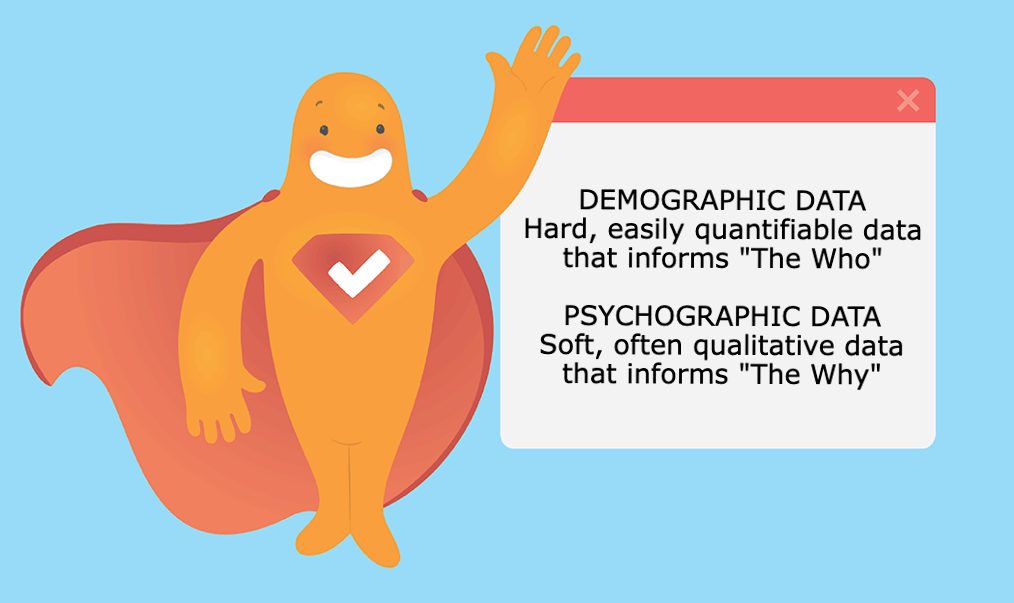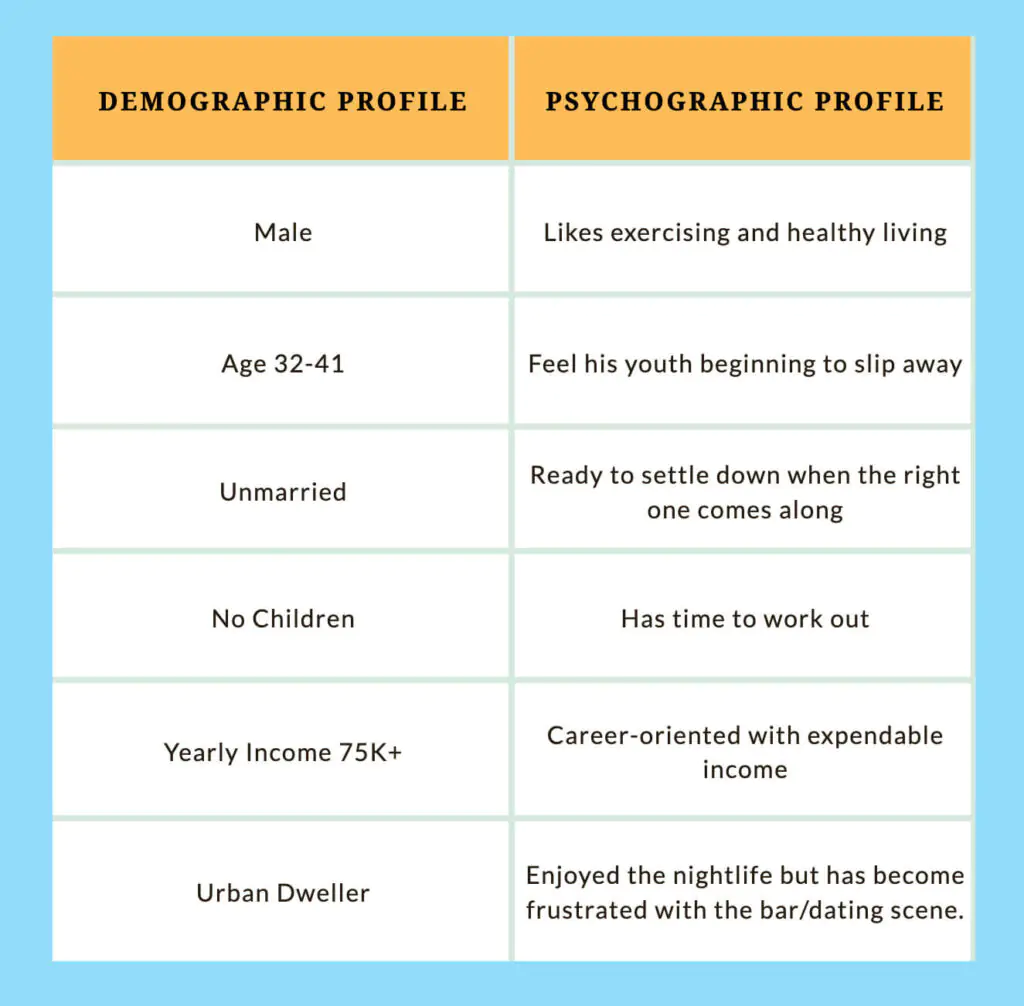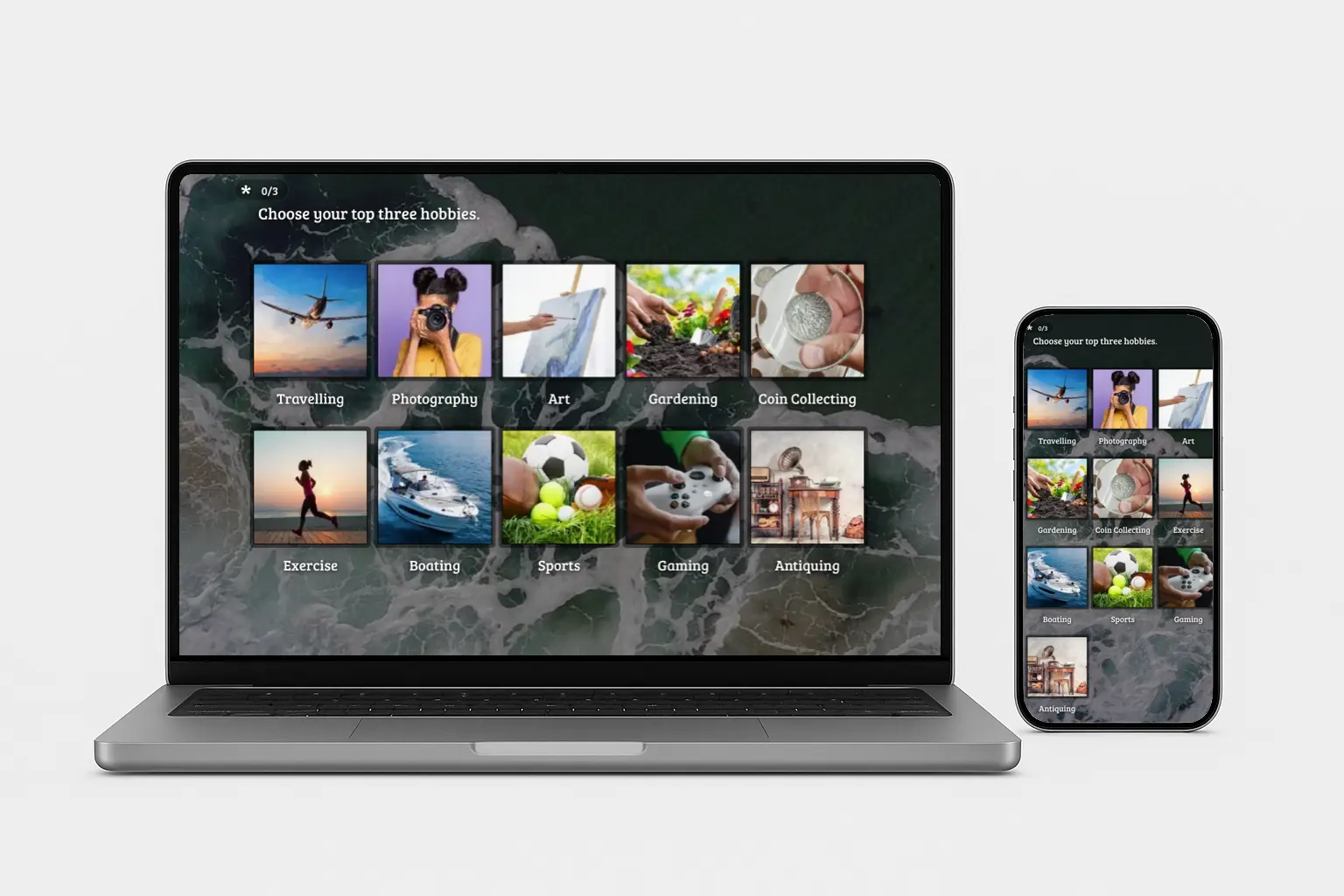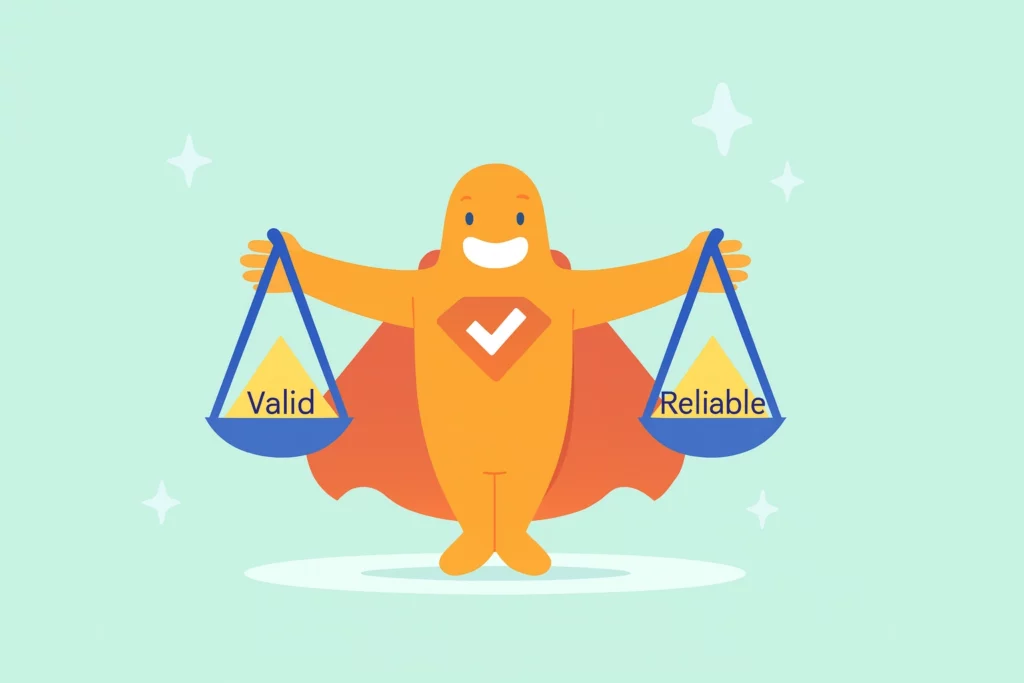Psychographic segmentation divides audiences based on psychological traits such as personality, lifestyle, values, interests, and attitudes, allowing businesses to better understand what motivates their customers. Unlike demographic data, which explains who buyers are, psychographics reveal why they buy. This segmentation helps create personalized marketing strategies, build stronger customer connections, and enhance brand loyalty. By using surveys and behavioral insights, marketers can identify key segments—like achievers, rebels, or eco-conscious consumers—and craft messaging that resonates emotionally. When paired with demographic and behavioral data, psychographic segmentation delivers deeper insights that drive smarter, more targeted marketing decisions.
Create your FREE Psychographic Survey, Poll, or Questionnaire now!
The term psychographic is derived from the word psyche (meaning the human spirit or mind) and the word graphic (meaning a representative picture of something). So, psychographic segmentation is a research methodology that divides people into groups using psychological characteristics.
This approach divides consumers into distinct segments based on their psychological and emotional traits, allowing for more targeted marketing strategies. Psychographic segmentation is a type of market segmentation, which is the broader strategy of dividing a broad consumer market into smaller, more defined segments based on shared characteristics. Unlike demographic segmentation, psychographic segmentation-based approaches focus on consumers’ activities, interests, and opinions (AIO), tailoring marketing efforts to behavioral and psychological characteristics rather than just demographic data. Criteria will typically include one or more of the following: personality, lifestyle, social status, activities, interests, values, opinions, attitudes, and aspirations. When it comes to surveys, researchers will typically use a psychographic survey, a demographic survey, or a combination of both.
Create your FREE Psychographic Survey, Poll, or Questionnaire now!
Psychographic Segmentation vs Demographic Segmentation
Demographic data tells you about a person, using data like age, race, gender, education or income level, occupation, and so on. On the other hand, psychographic data tells you about how a person feels, what their goals are, what they value, and so on. Behavioral segmentation is another important type, focusing on customer actions such as purchase history and website visits to better understand their behaviors. Customer segmentation is the overall process of dividing customers into groups based on these different types of data to enable more targeted marketing strategies.

Psychographic Segmentation and the Buyer Persona
While demographic data is usually easier to obtain, psychographic data is often far more valuable for marketers and researchers. Consider a marketing agency that is developing a new exercise product aimed at male millennials. Demographic data will help them zero in on that age group and gender, while psychographic data will help them understand if they would be interested in the product itself. That’s why a combination of demographic and psychographic data is a win-win.
Here’s a look at how using both types of data, a company can come up with a buyer persona for whom they call “Millennial Mark.” A buyer persona is a fictional profile of a potential customer that might include their age, career, hobbies, challenges, etc. Creating detailed buyer personas based on psychological traits allows organizations to better understand their customers’ motivations, behaviors, and preferences. Personal preferences, such as individual tastes, lifestyles, and motivations, are key components in understanding psychographic segments and building accurate buyer personas.

As you can see, “Millennial Mark” is a great candidate for this new exercise equipment. Mark can afford it and cares about staying in shape, especially since he feels his “youth is slipping away.” Plus, with no children, he has the time to work out. Finally, he is ready to settle down and may think he needs to have a great body to find the right partner. Mark’s buying behavior and buying behaviors, such as his motivation to stay fit and his readiness to invest in health products, inform the creation of his buyer persona.
Companies use buyer personas like “Millennial Mark” to identify target segments and target groups, allowing them to tailor their marketing efforts and messaging to reach the most relevant audiences.
Benefits of Psychographic Segmentation for Surveys
Here are seven key benefits of using psychographic segmentation on your marketing or research surveys. Psychographic segmentation provides valuable insights into consumer behavior and preferences, enabling more effective targeting and engagement.
- Gaining a deeper understanding of customer personas, attitudes, and behaviors allows for more precise targeting and improved customer relationships.
- Gaining the ability to communicate with them on a more personal and emotional level.
- Customizing your marketing messaging from general features and benefits to how a product or service will fit into and improve someone’s life.
- Psychographic segmentation helps enhance customer loyalty and marketing effectiveness by uncovering attitudes and preferences for more targeted campaigns.
- Obtaining customer insights from psychographic data, surveys, and interviews to refine marketing strategies and improve product offerings.
- Learning how and why someone uses your product or service.
- Learning why someone may not be interested in your product or service and how you can improve it.
Five Psychographic Segmentation Variables
Psychographic segmentation has become increasingly important as more people continue to define themselves based on their beliefs, activities, hobbies, and so on. The emergence of social media has been a large impetus for this, allowing us to easily connect with like-minded people with shared interests. Psychographic variables help marketers identify and target each customer group, which is a specific segment within a market defined by shared psychographic characteristics. Currently, there are five psychographic segmentation variables that researchers have identified.
1. Personality
Many people make a lot of their buying decisions based on their personality. An easy way to remember what psychologists consider the “Big 5 Personality Traits” is the acronym OCEAN, which stands for the following:
- Openness to new ideas. These people are imaginative and creative and welcome change.
- Conscientiousness toward others. These people often plan and take other people into consideration.
- Extroversion level. Those who are extroverted are outgoing and enjoy the company of others, while those who are introverted prefer more alone time.
- Agreeableness with others. These people are cooperative and kind, whereas other people may be untrusting and disagreeable.
- Neuroticism or level of emotional stability. Highly neurotic people will tend to be moody or anxious, while, at the other end of the spectrum, are those who are relaxed and more stable emotionally.
For example, business professionals often form a distinct segment with personality characteristics such as high conscientiousness and openness, which marketers can target with tailored messaging.
Psychographic segmentation in marketing uses these traits to develop product messaging for their target audience.
2. Lifestyle
Depending on a person’s lifestyle, they are likely to have different needs, wants, goals, and challenges. The lifestyle of a serial dater, for example, will likely be very different from that of a soccer mom, just as the lifestyle of a yoga enthusiast may be different from that of a thrillseeker.
Habits also factor into a person’s lifestyle. Do they wake up and grab Starbucks every morning, or wake up and hit the gym? These types of habits help marketers to design menus for those coffee drinkers or create apparel for those early exercisers. Loyalty clubs, for example, are often highly based on a person’s habits and have given rise to the “lifestyle brand,” which is a product or service that is an important part of someone’s life. Loyalty programs can be tailored to different lifestyle segments, using customer segmentation and psychographics to offer rewards that encourage repeat business and enhance customer retention.
3. Social Status
A person’s social status, which is typically related to their income, will influence their purchase habits. This usually factors heavily when a marketer is determining their marketing mix (pricing, messaging, and so on). Commonly used classes include upper class, upper middle class, middle class, working class, and lower income.
Social class psychographic segmentation is a method used to classify consumers based on their socioeconomic status and spending behaviors, allowing brands to tailor their marketing strategies, product preferences, and pricing to different social class groups.
Of course, some people will make purchases that fall outside of their “class” because an item is desirable and makes some sort of statement. For example, someone who buys a new BMW because it is a status symbol, even though it is out of their price range.
4. Attitudes
Attitudes are often formed based on a person’s cultural background and upbringing, but this can, of course, change over time. An example may be whether they have a positive or negative attitude, or it could be more complicated, like whether they have trust or distrust in politicians. To determine people’s attitudes, many researchers use a Likert scale survey to ask people to rate characteristics on a graded scale, from “not at all important” to “extremely important.”
5. Activities, Interests, and Opinions (AIO)
A person’s activities, interests, and opinions, or AIO, say a lot about them—and for marketers, a lot about how to attract them.
- Activities are focused on people’s daily routines and/or hobbies. A person who bicycles to work every day and plays golf on the weekends will likely have different purchasing patterns from someone who drives to work and binge-watches Netflix on the weekends.
- Interests can have some overlap with activities (e.g., someone may list gardening as an interest, but this is also an activity). A better example of an interest would be someone who enjoys coffee. They probably wouldn’t consider this an activity, but it’s something they enjoy. For example, millennials became crazy for coffee yet craved variety, leading to “coffee of the month” subscription clubs.
- Opinions can be held on any number of things, from the social to the political. Marketers aren’t usually in the business of changing minds, but they do like to know how strongly people feel on certain topics to inform their brand messaging. For example, they may survey consumers to find out how much they care about sustainability; if a clear majority highly value this, the brand may want to highlight that their product is eco-friendly.
How is Psychographic Information Gathered?
Online surveys are the most cost-effective and efficient way to collect psychographic information about your target audience. Collecting psychographic data through surveys allows you to gather insights into consumer interests, preferences, and behaviors. Plus, because psychographic surveys can get into some personal or sensitive questions, surveys can offer anonymity that in-person interviews cannot.
Here’s an example of a psychographic survey created with SurveyLegend. You’ll see that it begins with some qualifying demographic questions before launching into psychographic questions. To collect psychographic segmentation data, surveys often use a mix of open-ended, Likert scale, and semantic differential questions to better understand consumers’ personalities, lifestyles, opinions, and attitudes.
NOTE: The example below is live, give it a try!
Sometimes, surveys are conducted to get a quick response from a large population. Then, in order to delve deeper with the most qualified respondents, a more involved survey is conducted among this smaller subset. Or, these individuals may be contacts for a follow-up in-person interview or focus group. In addition to psychographic data, collecting behavioral data—such as tracking customer actions—can provide further insights when combined with psychographic information.
Psychographic Segmentation in Marketing: Examples
Here are six brands that market themselves using psychographic segmentation. These brands likely conducted surveys to find out who their customer base is, what they value, and what motivates them in order to craft messaging that would speak to them. Brands use psychographic segmentation to identify and reach their ideal audience, tailoring products and services to meet specific psychological needs. By analyzing psychographic data, brands can create campaigns and marketing strategies that resonate with current and prospective customers. Psychographic insights also help brands update their marketing materials to better connect with their audience.
Brands craft marketing messages tailored to each psychographic segment, ensuring their communication aligns with the interests, values, and motivations of their target groups. They also predict consumer behavior by analyzing lifestyle, attitudes, and preferences, allowing for more effective targeting.
- Nike, “Just Do It”. A tagline that resonates with athletes, the brand promises to give people the tools they need to perform better. Nike’s marketing campaign targets a psychographic segment of motivated, achievement-oriented individuals.
- Dollar Shave Club, “Shave Time, Shave Money”. At the time of its inception, shaving clubs were not a thing. This tagline hit home for both money-conscious consumers and those who value convenience. Their marketing campaign focused on a psychographic segment that values practicality and savings.
- BMW, “The Ultimate Driving Machine”. This tagline touches on people’s desire to drive a status symbol once they’ve “arrived” in their career and financially. BMW’s marketing campaign appeals to a psychographic segment seeking prestige and performance.
- Rothy’s, “Reduce Your Carbon Footprint In Style”. This niche brand of footwear knows that its customers care about the environment. So, they employ a zero-waste manufacturing process and let their customers know. Their marketing campaign targets a psychographic segment of eco-conscious, style-driven consumers.
- Taco Bell, “Think Outside the Bun”. This slogan was designed to tap into fast foodies who were tired of hamburger joints. Taco Bell’s marketing campaign appeals to a psychographic segment that values novelty and variety.
- Harley-Davidson, “Free By Birth, Rebel By Choice”. Harley knows their audience, and it shows. This tagline appeals to bikers who value American brands and who love the freedom of riding. Their marketing campaign targets a psychographic segment of independent, freedom-loving individuals.
Common Challenges and Limitations of Psychographic Segmentation
While psychographic segmentation offers powerful insights into the psychological traits and motivations of your target audience, it also presents several unique challenges and limitations that marketers and researchers must navigate. One of the primary hurdles is the complexity involved in collecting and analyzing psychographic data. Unlike demographic data, which is often straightforward and readily available, psychographic segmentation data delves into the deeper psychological characteristics, attitudes, and behaviors of consumers. This requires more sophisticated market research methods, such as in-depth surveys, focus groups, and behavioral analysis, all of which can be time-consuming and resource-intensive.
Another significant challenge is ensuring the accuracy and reliability of psychographic segmentation. Because psychographic characteristics are inherently subjective and influenced by a range of psychological factors—including cultural background, personal experiences, and social environments—there is a risk of misinterpreting or oversimplifying the data. This can lead to marketing strategies that miss the mark with your target audiences, resulting in less effective marketing campaigns and lower engagement rates.
Additionally, psychographic segmentation demands a deep understanding of consumer behaviors and the psychological factors influencing buying decisions. Gaining these actionable insights often requires a combination of qualitative data from interviews or focus groups and quantitative data from larger-scale surveys. However, even with robust research, it can be challenging to capture the full complexity of human behavior, and some psychographic segments may not be as clearly defined as demographic groups.
The dynamic nature of consumer preferences adds another layer of complexity. As societal trends shift, technology evolves, and personal values change, the psychographic attributes of your target market can also transform. This means that psychographic segments must be regularly reviewed and updated to ensure your marketing strategies remain relevant and effective. Keeping pace with these changes requires ongoing investment in market research and a willingness to adapt your marketing messaging and campaigns.
Despite these challenges, psychographic segmentation remains a valuable tool for creating more personalized marketing strategies and connecting with your target consumers on a deeper level. To overcome its limitations, businesses should consider combining psychographic insights with demographic, behavioral, and quantitative data. This integrated approach to audience segmentation allows for a more comprehensive understanding of your customer base, enabling you to develop effective marketing strategies tailored to the unique needs and psychological characteristics of each customer segment.
In summary, while psychographic segmentation is not without its obstacles, its ability to uncover the psychological factors influencing consumer behavior makes it indispensable for businesses seeking to create personalized marketing campaigns and foster lasting connections with their audience segments. By embracing a multifaceted approach to market research and continually refining your psychographic segments, you can harness the full potential of psychographic segmentation to drive more effective marketing efforts and achieve long-term business success.
Conclusion
Psychographic segmentation is a great way for researchers to learn about people and society. It’s also a powerful tool for marketers needing to better understand their customers. Psychographic segmentation in marketing can uncover a whole host of information about consumers: their personality, lifestyle, social status, activities, interests, values, opinions, attitudes, and aspirations. It’s a marketer’s best friend when it comes to messaging!
Ready to create your psychographic survey? Start now with SurveyLegend! Our surveys are easy to create, render beautifully on any device, and allow you to add images to your surveys to make them more engaging. They’re highly secure, allow for anonymity, and provide awesome analytics.
Have you conducted psychographic surveys in the past? Do you use them in conjunction with demographic questions? Sound off in the comments!
Create your FREE Psychographic Survey, Poll, or Questionnaire now!
Frequently Asked Questions (FAQs)
What is psychographic segmentation?
Psychographic segmentation groups people into categories based on psychological characteristics such as personality, lifestyle, social status, activities, interests, values, opinions, attitudes, and aspirations.
What is the difference between psychographic segmentation vs demographic segmentation?
Demographic information looks at hard data (age, race, gender, etc) while psychographic information looks at soft data (feelings, opinions, attitudes, etc). Demographic data is quantitative, while psychographic data is qualitative.
How is psychographic information gathered?
The most common way to collect psychographic information is through an online survey, although in-person interviews and focus groups are also popular.
Why is psychographic segmentation important?
Psychographic data helps researchers better understand people and helps marketers inform their marketing strategy. When combined with demographic data, it can be a very powerful tool.



